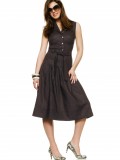Read this ebook for free! No credit card needed, absolutely nothing to pay.
Words: 257415 in 144 pages
This is an ebook sharing website. You can read the uploaded ebooks for free here. No credit cards needed, nothing to pay. If you want to own a digital copy of the ebook, or want to read offline with your favorite ebook-reader, then you can choose to buy and download the ebook.


: Trial of the Major War Criminals Before the International Military Tribunal Nuremburg 14 November 1945-1 October 1946 Volume 14 by Various - Göring Hermann 1893-1946 Trials litigation etc.; Nuremberg Trial of Major German War Criminals Nuremberg Germany 1
.
PROCESSES PREPARATORY TO DYEING-- Scouring and Bleaching of Wool............................ 15
DYEING MACHINERY AND DYEING MANIPULATIONS-- Loose Wool Dyeing, Yarn Dyeing and Piece Dyeing Machinery................................................. 40
THE PRINCIPLES AND PRACTICE OF WOOL DYEING-- Properties of Wool -- Methods of Wool Dyeing -- Groups of Dyes --Dyeing with the Direct Dyes -- Dyeing with Basic Dyes -- Dyeing with Acid Dyes -- Dyeing with Mordant Dyes -- Level Dyeing -- Blacks on Wool -- Reds on Wool -- Mordanting of Wool -- Orange Shades on Wool -- Yellow Shades on Wool -- Green Shades on Wool -- Blue Shades on Wool -- Violet Shades on Wool -- Brown Shades on Wool -- Mode Colours on Wool.................... 59
DYEING UNION FABRICS............... 168
DYEING OF GLORIA........................................... 188
OPERATIONS FOLLOWING DYEING-- Washing--Soaping--Drying................................. 197
EXPERIMENTAL DYEING AND COMPARATIVE DYE TESTING............ 211
TESTING OF THE COLOUR OF DYED FABRICS...................... 218
Fig. Page
THE WOOL FIBRE.
The skin of all animals is covered with more or less of a fibrous coat, which serves as a sort of protecting coat from the weather to the skin underneath. Two different kinds of fibres are found on animals; one is a stiff kind of fibre varying in length very much and called hairy fibres, these sometimes grow to a great length. The other class of animal fibres are the woolly fibres, short, elastic and soft; they are the most esteemed for the manufacture of textile fabrics, it is only when the hairy fibres are long that they are serviceable for this particular purpose. There is a slight difference in the structure of the two kinds of fibre, woolly fibres having a more scaly structure than hairy fibres; the latter also differ in being more cylindrical in form.
Free books android app tbrJar TBR JAR Read Free books online gutenberg
More posts by @FreeBooks

: An Index to the First Thirty-Three Volumes of the Yale Literary Magazine February 1836-July 1868 by Bagg Lyman Hotchkiss Compiler - Yale literary magazine Indexes


: The Young Continentals at Lexington by McIntyre John T John Thomas Boyer Ralph L Ralph Ludwig Illustrator - Historical fiction; United States History Revolution 1775-1783 Juvenile fiction; Lexington Battle of Lexington Mass. 1775 Juvenile fiction





